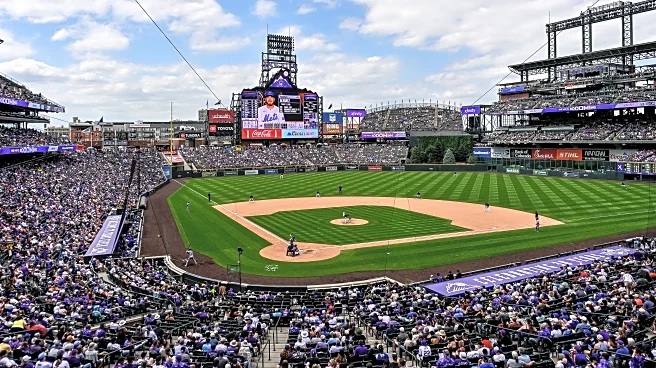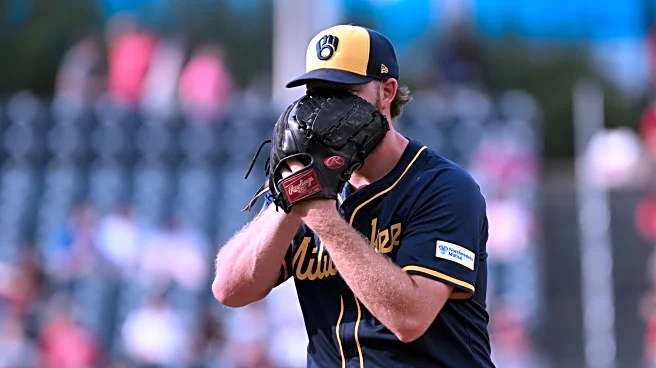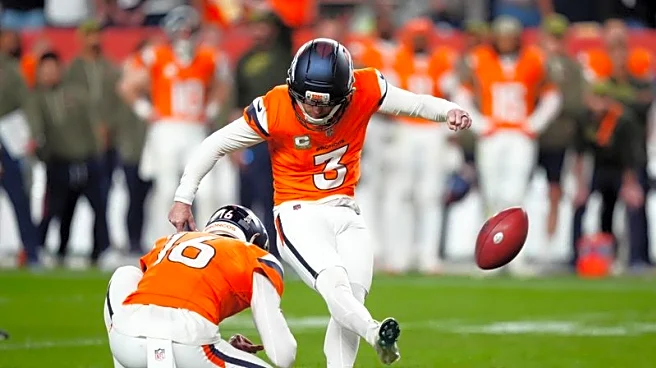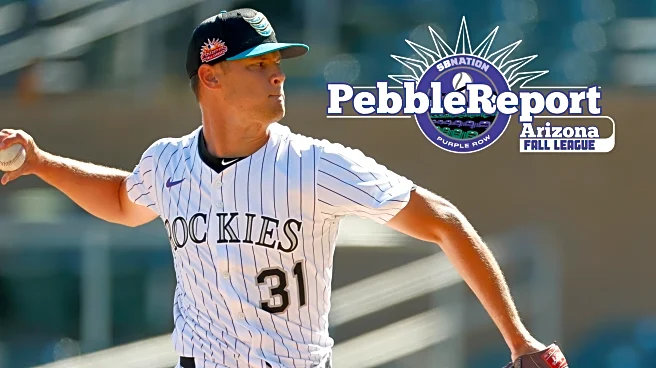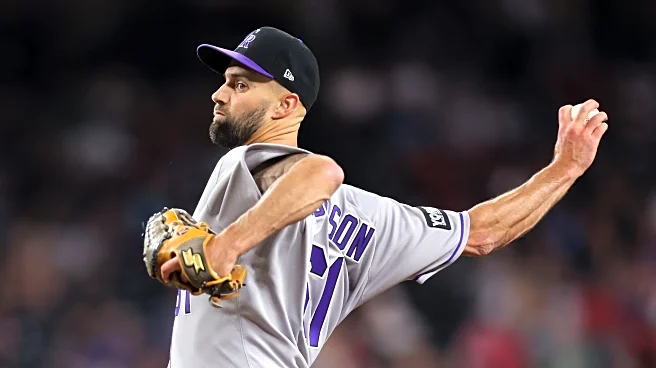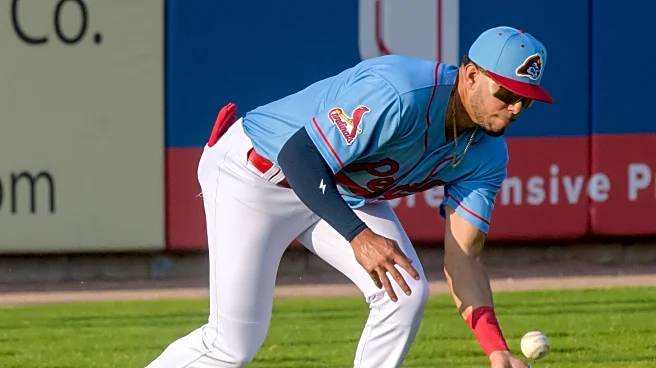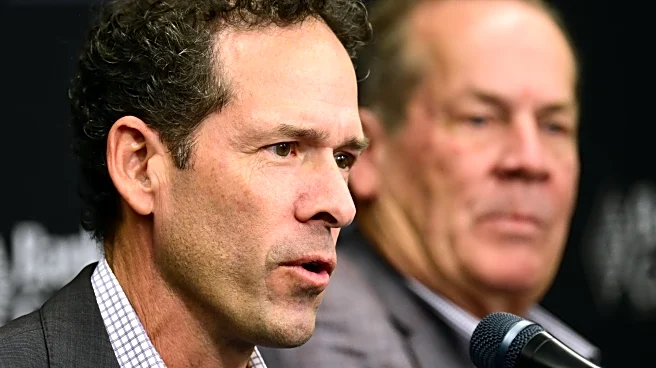The Colorado Rockies’ President of Baseball Operations, Paul DePodesta, has a lot of things on his plate as he tries to fix things in Denver. That’s what makes the news that he is very likely to hire a general manager beneath him such a welcome thought. Delegating and collaborating with another individual to carry out the vision will hopefully bring about some change for the Colorado Rockies, but he person he will hire remains a mystery.
So, why don’t I give it a try?
I love the challenge of building
a roster to win. I narrowly lost the championship match of my fantasy baseball league this year (thanks a lot, teams that rested some of their best players the last two days of the season). I also regularly build playoff-caliber teams in MLB The Show’s franchise mode and dabble in the spreadsheet simulator that is Out of the Park Baseball on my computer.
Taking over as a freshly minted GM after the disastrous 2025 season, I was ready to spend an offseason trying to fix the Rockies and build a winner as quickly as possible. Now, because it’s a video game simulation, there are plenty of liberties that are taken by me and the game concerning transactions and personnel. I only worked until the start of spring training, so let’s see how my offseason went.
Coaching Staff
One of the first things I needed to do was build out a big league coaching staff. Figuring he was a quality man for the official job, I stuck with Warren Schaeffer as the manager. Schaeffer has a good relationship with the players in the clubhouse, and it seemed only natural that he get a chance to be in charge from the beginning.
As for the rest of the staff, I opted for a more nostalgic approach for the fun of it. Due to his reputation as a leader during his playing career and his experience as manager of the 18U Team USA squad, I hired Michael Cuddyer as the bench coach.
Seeking experienced help with pitching at Coors Field, I hired Aaron Cook to share his expertise as a pitching coach. Cook popped up throughout the season as a guest advisor, so why not have him on board full-time? As for the hitting coach, I went a little more out of the box and brought in Jason Giambi to hopefully spark the offense with some power and maybe even use a special undergarment to break slumps.
To help with the infield, Clint Barmes was brought in as the first base coach. The only outside hire was Mike Freeman to coach third base. Freeman was a big league utility player and has been the manager of the Seattle Mariners’ Double-A affiliate since 2023.
November Waiver Frenzy and Trades
With a staff in place, I was ready to start working on the roster. Since the Rockies had the worst record in baseball, they got top priority on the waiver wire, meaning I had my pick of available players that were kicked off their team’s 40-man roster.
I went heavy on pitching in that initial waiver claim frenzy and managed to snag the following players:
- SP Logan Allen (CLE)
- SP Luis Gil (NYY)
- RP Mason Fluharty (TOR)
- RP Edgardo Henriquez (LAD)
- RP Jovani Moran (BOS)
- 1B Jake Bauers (MIL)
Of course, with the influx of players, I needed to make room on the 40-man roster myself. One of my first moves was releasing the oft-injured Kris Bryant as well as veteran arm Antonio Senzatela. Additionally, I decided to release Jeff Criswell as I felt I couldn’t wait and see how he recovered from his injury, though he did end up signed by the Los Angeles Angels.
Alongside the waiver claims, I made a couple of trades to open some space. Michael Toglia was shipped off to Miami for a trio of prospects: starting pitcher Emmett Olson, shortstop Cam Clayton, and reliever Will Schomberg.
Additionally, to my surprise, the Texas Rangers actually called up and offered third baseman Josh Jung and prospect catcher Cal Stark in exchange for Tyler Freeman. I had no intentions of seeking out additional third base help, but that seemed like a tough deal to pass up.
Arbitration and December
When arbitration came around, I settled on relatively cheap deals with Jimmy Herget ($2.7 million), Ryan Feltner ($3 million), Brenton Doyle ($1.86 million), Mickey Moniak ($3.86 million) and Bauers ($2.42 million). While deals had been struck, none of the players were necessarily safe to make it to 2026.
On December 10, I struck a deal with Tampa Bay. I would acquire starting pitcher Shane Baz and reliever Mason Englert, and in exchange, I would send Doyle to the Rays. I hesitated to trade Doyle because the market didn’t necessarily have many decent center field options, but I had been given a mandate to improve the pitching. I would take my chances trying to find a center fielder and jump on a chance to get a quality starter in Baz. I proceeded to sign Baz to a three-year extension worth $26.8 million, buying up his arbitration years on a cost-controlled scale.
Not much else happened in December. The Winter Meetings came and went, and I declined to select anyone in the Rule-5 Draft since there wasn’t really anything worthwhile available. I had put a setting for minor league free agents to be handled by the minor league managers, and they did sign a handful of free agents, but nothing of note that needs mentioning.
The New Year and the Quest for a Center Fielder
As January rolled around, I found my quest for a new center fielder to replace Doyle a bit tougher than I had expected. The free agent market was barren of any player that could be seen as an upgrade and trade offers I sought out didn’t yield fruitful talks. As minor league free agents continued to sign as well as international free agents, I continued to see help on the margins where I could.
I signed pitcher Aaron Civale to a minor league contract with a major league option to serve as starting depth. I also made another trade, this time with the Milwaukee Brewers. The Brewers had offered utility player Tyler Black for Braxton Fulford and 18-year-old minor league right-hander Jhoan Espinoza.
Saving myself a bit of money, I then traded Bauers to the Baltimore Orioles to get outfielder Dylan Carlson. Being the sly fox that I am, the Orioles agreed to retain 100% of Carlson’s contract. He could definitely play center fielder without much of a problem but his bat is a concern. He will be in the mix, but my job wasn’t complete.
I went on to sign Dominic Fletcher to a split contract with the hope that perhaps he could find a way to translate his Triple-A production to the big leagues. Outfielders Akil Baddoo and Bryan De La Cruz also joined the outfield mix, but they are only on minor league deals with invites to spring training. I found that I was going to have to mix-and-match in the outfield when spring training rolled around and see what sticks while hoping Cole Carrigg can be ready sooner rather than later.
Free Agent Splash and Surprise Waiver Claims
As you’ll notice, I didn’t do much with major free agents, but it wasn’t for lack of trying. Early on, I had offered an eight-year contract to Bo Bichette worth over $200 million, but he rejected it and eventually went on to sign with Texas for eight years, $379.5 million, and an opt-out after three years, a concept I had initially offered in my proposal.
I had also offered a two-year, $36 million deal to Jorge Polanco, with the idea he would be my regular DH. Unfortunately, he elected to stay with Seattle on a four-year, $34 million deal.
I did, however, manage one major free agent when I picked up Rhys Hoskins on a three-year, $30.6 million contract. He had a bit of a down year in 2025, but my hope is that he can utilize Coors Field to boost the offense and blast plenty of home runs.
Hoskins wasn’t my only big acquisition because, for some reason, Royce Lewis was available on waivers from the Minnesota Twins. If he could stay healthy, he would be a steal for my offense and get time at third base. Reliever Marc Church was also on waivers from the Rangers, and I was able to snag him easily.
Signing Hoskins suddenly gave me a glut of first basemen again, especially since Black was listed as a first baseman now. Liking the idea of keeping the lefty as an option to platoon with Hoskins as needed, I sent Crim to Texas along with Herget for a prospect package. In return, the Rockies got outfielder Keith Jones II, left-handed pitcher Josh Trentadue, and catcher Tucker Mitchell. I also had to make room on the 40-man to add Lew and Church, resulting in Anthony Molina getting DFA’d. I hoped to sneak him through waivers, but he was claimed by Tampa Bay.
One final move before spring training came in the form of a waiver claim of Jack Leiter to add to the pitching mix. The former first-round pick still has potential, even after a rough time getting settled in Texas, and my hope is that he can come to realize more of his potential under my new Rockies regime.
Conclusion
All in all, I would say I had a fairly successful offseason building my roster. There are definitely still some flaws, as that outfield situation still worries me, and I didn’t touch second base. Still, in terms of total WAR added, the Rockies finished the offseason in second with 7.7 WAR gained, just behind the New York Yankees at 8.2 WAR.
Perhaps if there is interest, I’ll report back on the 2026 season in another article. I recognize my actions weren’t very realistic, but all things considered, this is a team that upgraded its pitching, specifically the rotation, and added an interesting mix of position players. Maybe, just maybe, it’s enough to convince DePodesta to consider this humble writer as the new Rockies GM.
After ending Rockies’ Silver Slugger drought, Goodman looks to take next step | MLB.com
Hunter Goodman’s Silver Slugger got lost a bit in the DePodesta news cycle, but Goodman is determined to keep building up his game on both sides of the ball.
Affected by Altitude Episode 188: Hi, I’m Paul | Rocky Mountain Rooftop
This week, Evan Lang and I break down our impressions of DePodesta’s first week of media interviews.
Please keep in mind our Purple Row Community Guidelines when you’re commenting. Thanks!
